Often after long socks knitted things are broken, dissolved, stretched elastic blouses and sweaters. There is a need to fix. Ordinary darning or patches spoil the view of things and often make them unusable. Being able to knit on spokes, it's nice to fix things so that defects will not be noticeable. If things are really worn, they can be dissolved and re-linked, adding the remnants of wool of a different color. In each house there are balls of colored thread, which can be used to trim bandages things.
Before you start to repair knitted things, they wash. For washing of knitted things used washing powders and soap flakes. The water is heated to 30 degrees, and add ammonia (3 tablespoons per 10 liters of water). When washing woolen clothes, do not RUB, wring - that they lose their original shape and fall heavily, making them unfit for repair and ligation. The washed product is rinsed in warm water, wring out without twisting. After that things are laid out on the fabric and give it the desired shape. Details of bands in the wash and the spin cycle does not stretch, and a slight squeeze.
Pat knitted items inside out using a wet cloth. Things, crocheted openwork and embossed patterns, not iron. After washing them laid out on the cloth, leaving to dry. Knitted blouses, dresses, sweaters should not be hung on the hangers, they are pulled. Keep them folded.
After the product is washed and ironed, to begin repairs. First of all separate the worn part: this product is unstitch at the seams, and then in the beginning of the series, located 2-3 cm above the worn out places, cut the loop and pick up with your fingers the end of the thread, gently pull and cut the thread. Worn part disappears and remains the main part of the product with a new set of free loops. Vacant loops put on the needle and knit the pattern in the opposite direction.
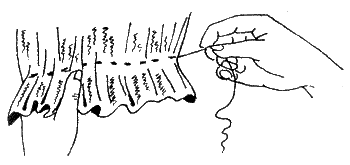
Figure 578. Pulling threads
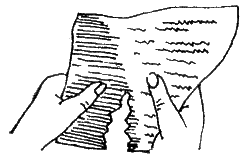
Figure 579. The release of parts from a damaged area
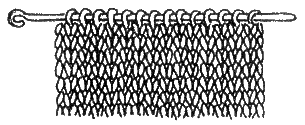
Figure 580. Released loops dialed on the needle
This way you can lengthen the thing, bandage stretched or blown rubber. If wool is not enough, the gum can be striped, selecting colors, to harmonize with the main color.
1. REPAIR SWEATERS OR SWEATSHIRTS
If the jumper is badly worn out (out of shape, frayed sleeves, highly stretched rubber band), repair start with the dissolution of the product at the seams, the details. After that every detail be washed separately and dried. You then need to cut out the worn areas, without breaking the loops.
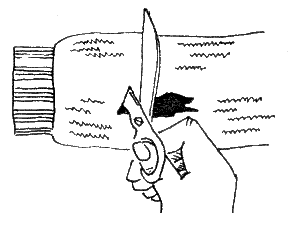
Figure 581. Removal of worn portions of
Loosen the upper and lower sides of the hole from the trimmed strands and wear on the needle loose loops, and the loop of the top row is transferred to a working thread and loop the bottom row over the pin. Then knit from the top side vents of a new square, keeping the print product. When the square is connected, all the loops of the last row connected to the needle hinges of the bottom side holes as shown in the figure.
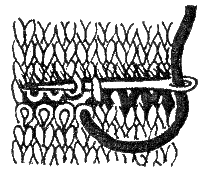
Figure 582. The connection of the loops with a needle
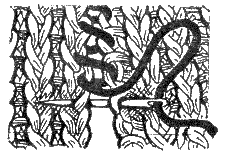
Figure 583. The stitching of the outer edge loops
Then the sides of the square stitch with knitted side-to-side holes, turning the sleeve inside out. In order that the seam was not visible, carefully align the detail row to row, loop to loop, using threads of primary colour. Sew the outer edges of the edge loops on both sides of the parts with each other so that the edges coincide.
After repair sleeve stripped (except sleeves with elastic band and embossed pattern)
2. REPAIR SOCKS
From wool socks and stockings are often torn heels and toes. Instead of the usual darning socks or stockings can be length that is much stronger and more beautiful.
When repairing the worn heel part cut out according to the method described in repair sleeves. Release the loop from the trimmed ends of the thread, wearing loops of the upper part of the hole on a knitting needle, a loop lower down on the other two, having picked up a few loops on the sides of the heel.
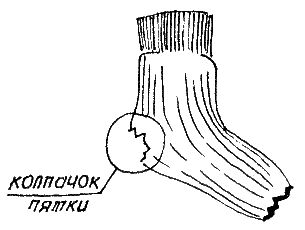
Figure 584. Sock with a worn heel
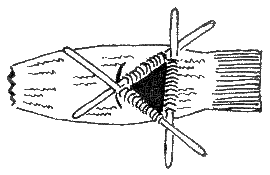
Figure 585. The tieback loops on three needles
Then start knitting socks by knitting loops only the upper side of the cut. With each new set with the last loop are finished one of the loops accumulated on the side spokes. So knit as long as both sides of the opening converge, then promazyvayut another 10 rows unchanged and proceed to the implementation of the cap heel (figure 584) is exactly the same as when knitting a sock. When the heel will be connected and will take the form of a cap, hinges left over from the middle of the heel joint (see "Repair sweaters or sweatshirts") with secondary loops the bottom of the hole. The remaining sides of the loop are sewn with side parts of the heel.
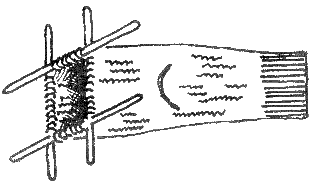
Figure 586. Dowiazanie toe sock
Repair of toe do the following: cut off the worn part, release the loop from the trimmed ends, put them on 4 needles and I am finishing, as described in the "Knitting socks."
3. THE REPAIR OF GLOVES AND MITTENS
Faster just gloves and mittens are worn, the ends of the fingers.
Repair begins with the removal of the damaged part. Release the loop from the trimmed ends of the thread. Released the loop is placed on the 3 spokes. Then add length your finger to the required length.
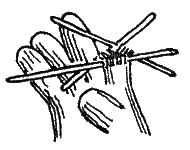
Figure 587. Nazvanie finger gloves
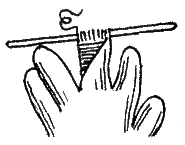
Figure 588. The repair of gloves connected to 2 spokes
The descent of the finger doing promazyvanie 2 loops together at the beginning of each spoke.
The worn rubber gloves and mittens are repaired in the same way as the elastic blouses and sweaters.
4. USEFUL TIPS
If upon the dissolution of the old item loop hard are released from each other, they should help a hook or a needle.
Connection details - the most important part of manufacturing of knitted clothes. Therefore, dismissing or re-associating the product, carefully check that parts of the product are evenly sewn together.



